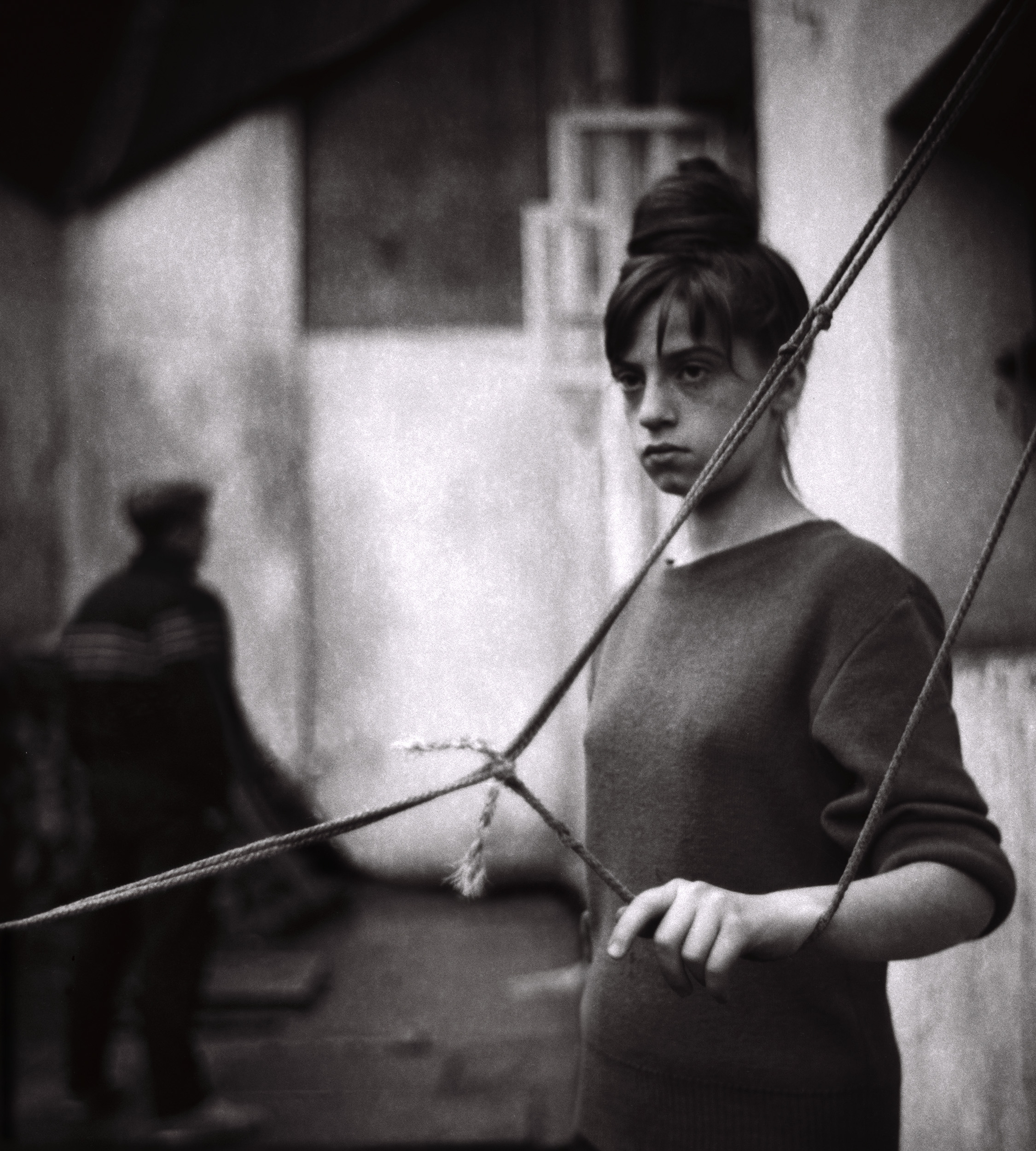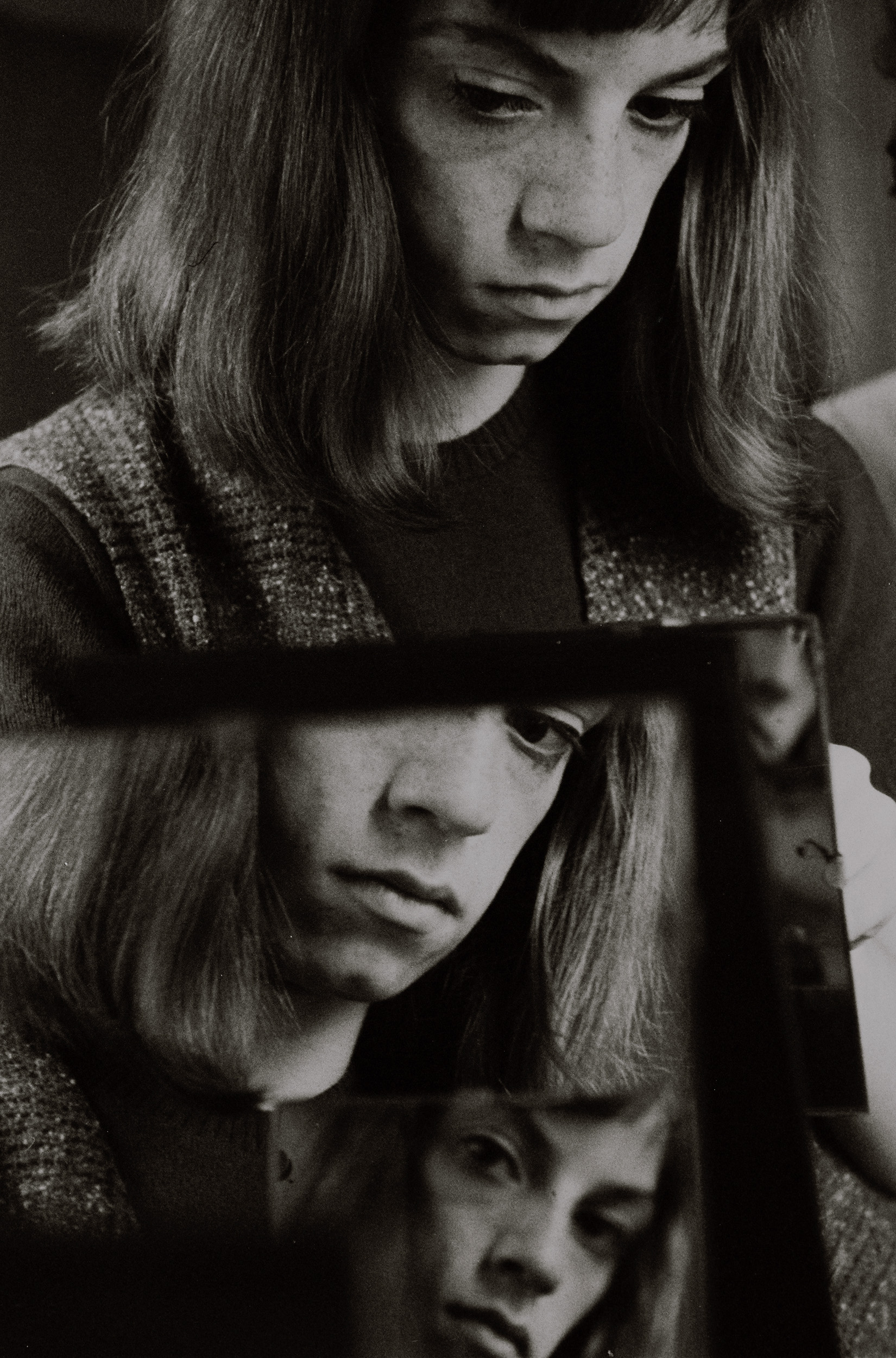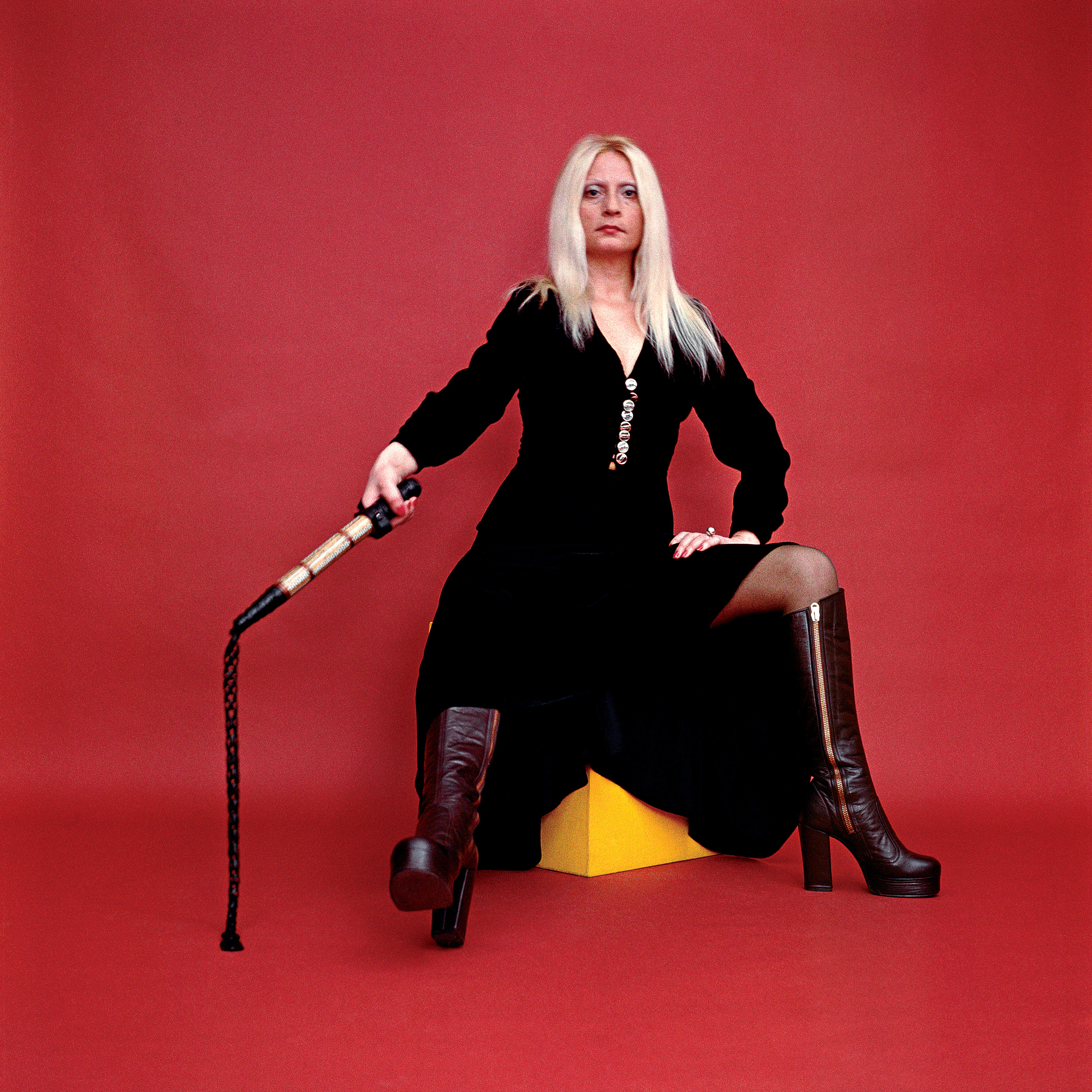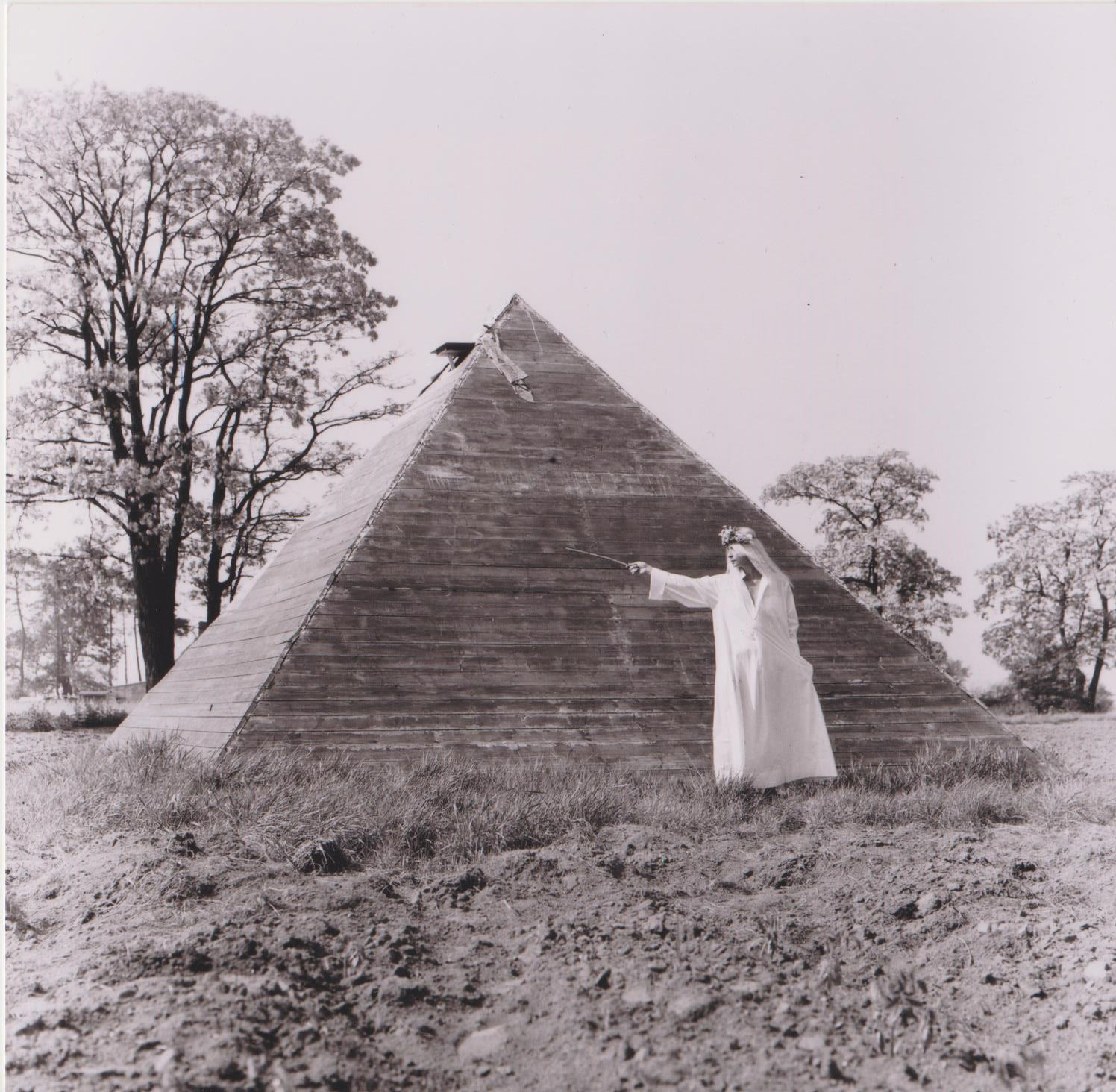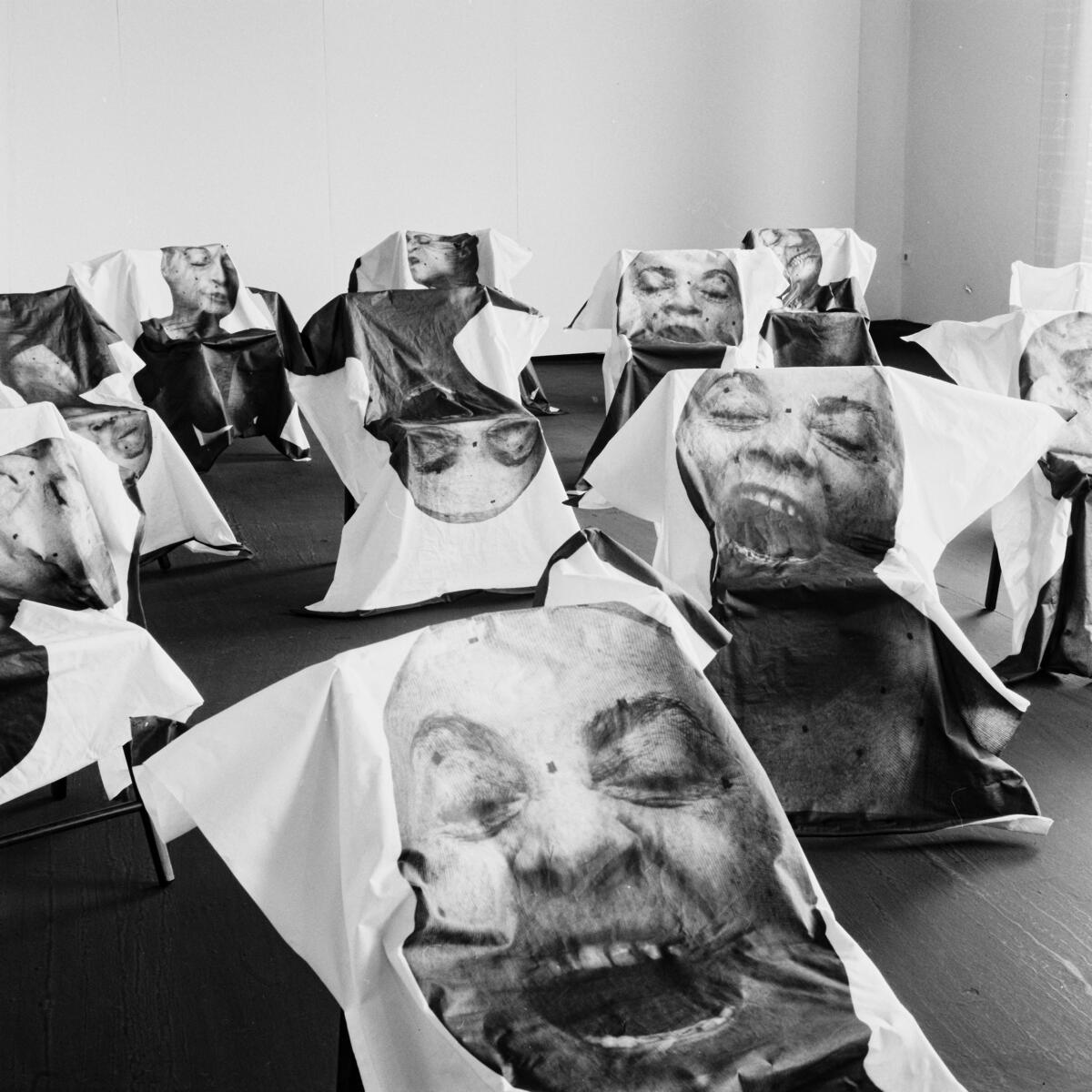
The work of Natalia LL (Natalia Lach-Lachowicz) occupies an uncommon position in the landscape of Polish art, because, compared to the majority of post-war avant-garde women artists, she is well-known. Her pieces belong to museum collections, they are present in academic discourse, and feature frequently in exhibitions. Such presence has not been experienced by many other female Polish artists debuting and active in the 1960s and 1970s. And yet, although numerous catalogues and other publications devoted to Natalia LL’s work have been published, only a certain limited selection of her pieces is still present in scholarly and curatorial circulation, perhaps mainly because her archive has so far been studied only in fragments. This situation was brought into sharp relief by the exhibition “I Record Common Events”, which I return to further on in the text.[1] The show featured photographs by Natalia LL never exhibited before, which form part of one of the artist’s major series, Consumer Art, and which essentially transform or broaden the scope of interpretative tropes around this piece, but also around the entire oeuvre of this Polish avant-garde artist.
This text seeks to offer a synthetic perspective on Natalia LL’s work, seen in terms of consistent and diverse attempts to represent various aspects of femininity, while taking into account the above mentioned pieces, only recently “discovered” for viewers.
Natalia LL was born as Natalia Lach in 1937 in Żywiec, a small town in southern Poland, where she also grew up. After World War II, her family relocated to Bielsko-Biała, from which the future artist moved to Wrocław and took up studies at the State Higher School of Visual Arts (PWSSP) in 1957. The time was relatively good for starting education at an art school, because in Natalia LL’s case it almost completely coincided with the socio-political and cultural “thaw”, which began in 1956, when the Socialist Realist period, lasting since 1949 in communist Poland, came to an end. The future co-founder of the Permafo group surely chose the Wrocław school because of its proximity to her family home, but hers was also a right decision given the character of the locally forming artistic circle, set to become, with Natalia LL’s prominent contribution, one of the liveliest and most progressive scenes in the region.
The formation of Wrocław’s dynamic artistic milieu began after World War II. In the second half of the 1950s, when Natalia moved to the city, student culture was flourishing, mainly owing to student clubs and experimental theatrical stages (e.g. Teatr Kalambur). Also developing in Wrocław was a performance art scene (not yet named as such[2]), with the Teatr Sensybilistów, among other organisations, as its driving force. However, the PWSSP in Wrocław was not in the least a progressive school during that era. Training was traditional, and an important place in the curriculum was attributed to glass design. That was the somewhat accidental reason why the artist had an opportunity to discover photography for her own purposes, a medium that was given considerable attention at the school, but only as an auxiliary to other disciplines of art, which came in useful in designing glass or textiles. But for Natalia LL the photographic camera became a tool of discovering extraordinary aspects of reality, since photography was much fitter for the purpose than traditional media. Akin to the representatives of the avant-garde in the interwar period, the artist discerned in photography the potential for reaching a different, more profound level of visual reality, or even the very possibility of genuinely noticing it at all. For human perception, exposed in the modern-day era to a myriad of stimuli, the photograph as a still image that captures the visible in a frame could become a means of cognition and the discovery of reality. This conviction slightly later became one of the foundations of the theory and practice of permanent art, which Natalia LL developed in the 1970s as part of her activity in the Permafo group, established in 1970 alongside her then husband, Andrzej Lachowicz, whom she had met as a younger student of the PWSSP in Wrocław. Photography had already become the artist’s favourite medium, at the beginning of the 1960s. It was then that the black and white photographic series Existences came into being, among other works.
These photographs from the 1960s, frequently characterised as “studies for a portrait”, were described by Natalia LL herself as an expression of her interest in existentialism and Italian neorealism, amongst other phenomena.[3] Individual shots feature a girl, the artist’s sister, whom she later portrayed a number of times. The model’s status appears ambiguous for some reason. The young woman is not looking into the camera lens, there is no smile on her face, she is not seeking contact with potential viewers. This offers grounds to assume that she has no intention to please the viewer, and remains indifferent to them. The photographs are something of a challenge thrown down at the artworks created for centuries by men and for men, so many of which were meant to offer pleasure to male viewers at the cost of objectifying female models. Małgorzata Jankowska has rightly compared these photographs to Alina Szapocznikow’s sculpture Difficult Age (1954–56)[4] – both pieces represent rare examples in Polish art of a young girl portrayed by another woman, not much her senior, but already at a different stage in life. The image represents the act of “noticing” this time in the life of a woman, the period between childhood and adulthood, as an expression of existence on a par with other periods. The piece marks Natalia LL’s first take on the topic, which she continues to explore to this day: femininity. Her works represent femininity as ambiguous, understood as an individual and universal experience, and as a fluid and changeable phenomenon that escapes framing and definitions. Natalia LL’s early photographs include one more work of importance for this perspective, Mirror from 1964. It is yet another black and white photographic portrait of her sister, which is multiplied in this case with the use of the eponymous mirror. The print features one face, but in fact shows three different faces.
The introduction of a mirror as an element of the composition initiates a sequence of associations, symbolic references and connotations. The main function of this object, stemming from its utilitarian role and defined by Jacques Lacan, among other figures, is that it allows us to realise our subjectivity and psycho-physical separateness.
If we therefore interpret these photographs (Existences and Mirror) as a certain whole read chronologically, we may assume that what they visualise is the process of the formation of subjectivity unfolding in the photographed person, who is initially unaware of her distinctiveness, but gains this awareness, and goes on to observe herself and others from the vantage point of this knowledge about herself and the world. At the same time, however, she is inconsistent as a subject, incoherent, but, interestingly, aware of this state, as shown by the act of looking at her own reflection. In this context, the piece emerges as Natalia LL’s seminal work, one which in a sense lies at the foundation of her later practice, largely devoted to cataloguing female polymorphousness. Her subsequent works, which usually form part of extensive series, are akin to various iterations of a diverse and ambiguous, often disturbing, image of femininity.
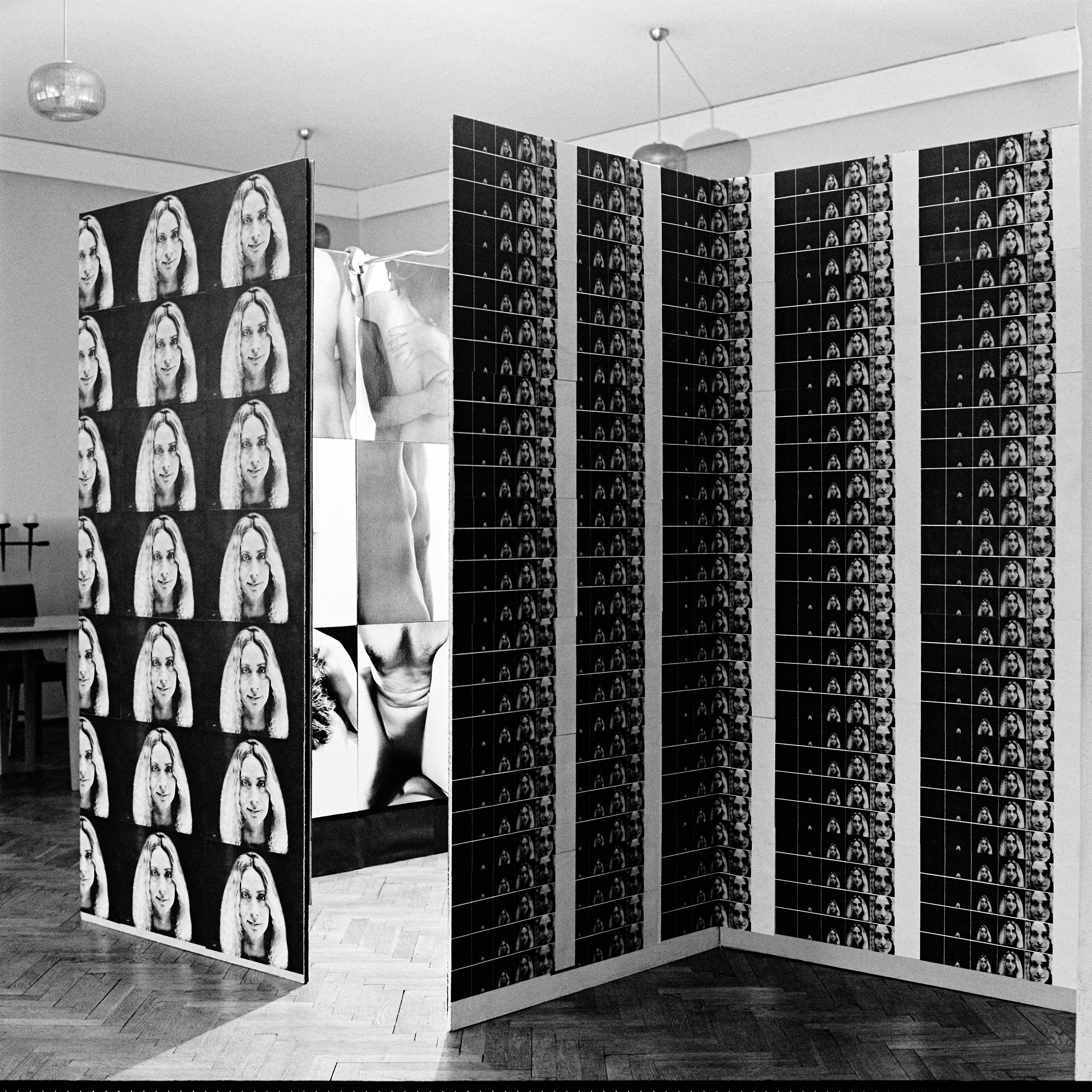
Natalia LL, ‘Intimate Photography’, Galeria Permafo, Wrocław, 1971, courtesy of the artist and lokal_30 gallery
We may therefore observe a powerful resonance between the Wrocław artist’s work and the now canonical writings by Judith Butler, which appear of key significance for understanding a great many of Natalia LL’s pieces. Butler wrote: “Apart from the foundationalist fictions that support the notion of the subject, however, there is the political problem that feminism encounters in the assumption that the term women denotes a common identity. Rather than a stable signifier that commands the assent of those whom it purports to describe and represent, women, even in the plural, has become a troublesome term, a site of contest, a cause for anxiety.”[5] Femininity in Natalia LL’s work is exactly like this. Its subsequent iterations combine to form a multi-layered changeable whole, and the category of a variable identity structure, as proposed by Butler, becomes a particularly relevant concept in attempts to define Natalia LL’s oeuvre.
A crucial thread that connects the individual iterations of femininity in Natalia LL’s work is the discovery of oneself through exploration of one’s sexuality. The cycle Intimate Photography (1968–69) places the focus on heterosexuality: the series comprises nude photographic shots of a man and a woman, who are, as we may guess, the artist herself and her partner, already her husband at the time, Andrzej Lachowicz, as well as multipart photographic sequences of a couple making love. The artist presented them at the Permafo Gallery exhibition in 1971 on a large-scale cube, combining the photographs with her own self-portraits (the piece was actually removed from the exhibition by censors).
In 1970, Natalia LL created the colour photographic series Velvet Terror, which portrays her as a dominatrix, her pose oozing confidence, with legs spread wide apart and feet clad in leather platform boots, sporting a black dress or tight trousers, with naked breasts and a whip in her hand. This work is particularly effective in inspiring reflection on the way in which the image of the woman and femininity is constructed. Can we talk at all about constructs of femininity as autonomous figures, given that they were and are formed under patriarchal social models? Is Velvet Terror an image of objectification, or quite the opposite: liberation? Perhaps the image shown by the artist in these pieces offers a visualisation of projections of the male subject, someone else’s fantasy about femininity.[6] We cannot exclude, however, that the artist adopted this role voluntarily in order to manifest power, self-will and the possibility of domination. Natalia LL’s works often invite this question, revealing the extent to which gender categories are entangled in cultural contexts, schemata and expectations.
Other iterations of femininity include a woman who experiences her body on her own, no longer in the company of a partner. In 1973, Natalia LL made the colour film Impressions, which offers an image of female nudity that is extraordinary in the landscape of Polish art. Slightly blurred but with rich colours, individual shots portray a naked young woman touching her full breasts, even playing with them. It is an unrestrained image of sexuality, which may give a (male or female) viewer pleasure, but also a record of the spontaneous discovery of one’s corporeality and pleasure by the filmed subject. The series Consumer Art and Post-Consumer Art may in fact be interpreted along similar lines, but on this note I would like to return to the question, mentioned at the beginning of this text, of the revision and ongoing discovery of various aspects of Natalia LL’s oeuvre.

Natalia LL, ‘Consumer art’, second of the triptych, 1972, photograph on baryta paper, courtesy of the artist and lokal_30 gallery
These frequently analysed series, so far mostly associated with images of women eating, biting, licking bananas and wieners, or else swallowing and spitting out sticky substances, have been interpreted, amongst other tropes, as an expression of the artist’s frustration at the persistent shortage of goods in Poland under communism, which Natalia fully became aware of while travelling to the USA and Western Europe, where the situation was markedly different. Other interpretations have highlighted a critique of excessive consumption, but the piece has perhaps most often been seen as an image of a liberated woman, aware of her sexuality, who exercises her right to sexual pleasure and taking control over it – the phallically shaped foods which the model uses in her actions are evocative of oral sex, but also imply the threat of castration. What is more, Amy Bryzgel noticed a previously overlooked difference between the two series – the model in Post-Consumer Art is more mature than her predecessor, she is a temptress who has mastered the art of seduction and harnesses it for her own needs.[7] The work generates a particularly large number of potential interpretative tropes which do not exclude each other, but rather complement the picture. It is just that the picture we have seen thus far is in itself incomplete. A certain fragment of Consumer Art is missing from the formulated interpretations: photographs made by the artist in 1973 (and exhibited the following year in Berlin at Paramedia Galerie in Natalia LL’s individual show “Verborgene Seite”), which portray naked women having sex, showing the vulva or simply lying next to one another, juxtaposed with photographs of orange segments. The artist’s gesture of replacing the phallic banana with a peeled orange, a fruit whose segments’ shape resembles the vagina, and representing lesbian couples as part of Consumer Art, essentially went unnoticed up till 2019 in Polish and international discourse around Natalia LL’s work.
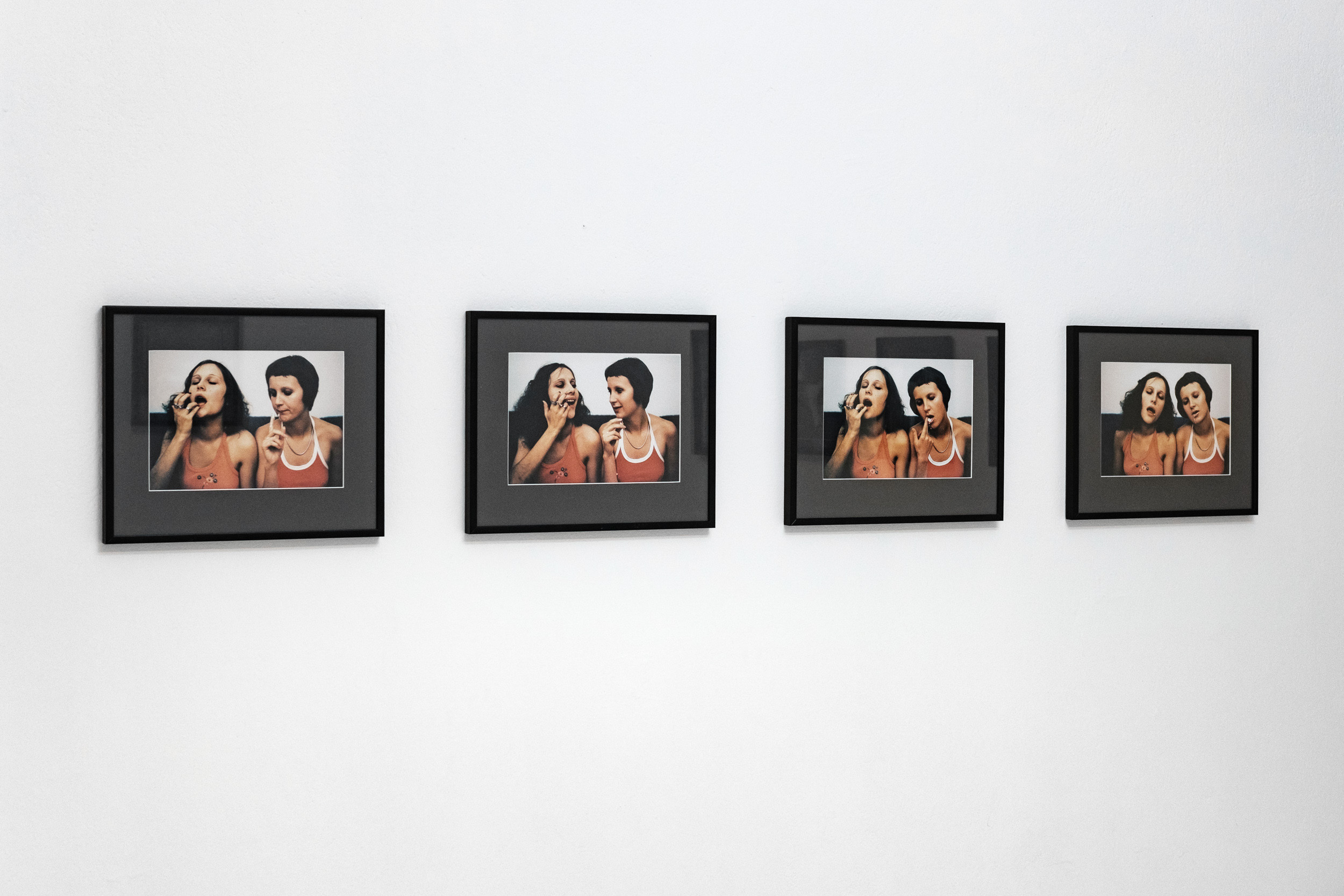
Natalia LL, ‘Consumer Art’, 1974, exhibition view of ‘I Record Common Events’ at lokal_30 gallery, photo: Bartosz Górka
An important question which will not be answered in this text, since it would require a separate study, is why this particular piece, which concerns lesbian love, went under the radar of critics, scholars and viewers, and was simply never shown at other exhibitions or reproduced. Although Natalia LL’s other projects sometimes happened to fall prey to censorship, they nevertheless functioned in the field of art already in the 1970s. But not this one. Interestingly, the Warsaw presentation of these pieces in 2019 also failed to inspire a broader reflection, which is striking, because the artist powerfully challenged the heteronormative point of view, opening up for her protagonist (persona, heroine, subject) a potential path to homosexual pleasure and relationships. Since constructing femininity as a certain determined and finite set of traits is essentially tantamount to strengthening the heteronormative worldview shaped by the masculinist matrix, Natalia LL constructs it in a way that opens it up as broadly as possible to subsequent incarnations.
Later decades of the artist’s activity brought images of a woman focussed on experiencing her own inner states and translating them into shared experience (Dreaming, Pyramid), a woman who experiences unity with the macrocosm (Points of Support), fear (States of Panic, Spheres of Panic), and collapse (Destructs). Natalia LL created yet another persona, Brünnhilde, who has appeared in the artist’s projects since the 1990s. The most beautiful among valkyries, the gallant she-warriors of Valhalla, came to serve as a medium to convey an image of female power which is built over time and enables taking ultimate control over one’s own sexuality (in one performance Brünnhilde cuts, crushes and destroys Natalia LL’s old-time and most famous prop: a banana; she thus fulfils the premonition of castration, anticipated nearly three decades before in Consumer Art). Some of the artist’s more recent works (such as Double Head, Double Phantom) feature the already mentioned gas mask, whose function allows us to see it as an item that protects one from, for example, the fear potentially caused by the necessity of struggle with one’s own body, the observation of its ageing processes, but also by the global threats which Natalia LL had already anticipated, but which we are only now becoming aware of and interpreting with the tools offered by ecofeminism.
In the light of the recently discovered images of femininity in Natalia LL’s work, we can state with confidence that her art surely needs revision, understood as an experience of looking behind oneself, seeing with fresh eyes, or approaching an old text from a new, critical perspective. Perhaps this process will reveal subsequent new iterations of femininity.
Translation: Łukasz Mojsak
Proofreading: Graham Crawford
[1] “I Record Common Events”, lokal_30 gallery, Warsaw, November 2019 – February 2020, curated by Agnieszka Rayzacher.
[2] The term “performance” was not yet in use in Polish art, neither then nor in the following years. It gained currency among artists and theorists only in the 1970s.
[3] https://nataliall.com/pl/lata-60-te/, accessed: 15 February 2021.
[4] Małgorzata Jankowska, Jedna o wielu twarzach. Natalia Lach-Lachowicz. Strategie i formy obecności (Toruń: Wydawnictwo Naukowe Uniwersytetu Mikołaja Kopernika w Toruniu, 2018), p. 216.
[5] Judith Butler, Gender Trouble. Feminism and the Subversion of Identity (New York and London: Routledge, 1990), p. 3.
[6] As we know, feminist scholars (Mary Kelly, Lucy Lippard, Griselda Pollock) threw doubt on the potential of the naked female body as a tool of political struggle, since such a body was constantly exposed to the threat of objectification, see: Lucy Lippard, The Pains and Pleasures of Rebirth: European and American Women’s Body Art, quoted from Jayne Wark, Radical Gestures: Feminism and Performance Art in North America (Montreal and Kingston: McGill-Queen’s University Press, 2006), p. 32.
[7] Amy Bryzgel, “Natalia L: Transfiguracje intymne”, in Natalia LL. Secretum et tremor (Warsaw: Centrum Sztuki Współczesnej Zamek Ujazdowski, 2015), p. 190.
Imprint
| Artist | Natalia LL |
| Exhibition | I Record Common Events |
| Place / venue | lokal_30 gallery, Warsaw, Poland |
| Dates | 29 November 2019 – 6 February 2020 |
| Curated by | Agnieszka Rayzacher |
| Website | lokal30.pl/ |
| Index | Agnieszka Rayzacher lokal_30 Marika Kuźmicz Natalia LL |

